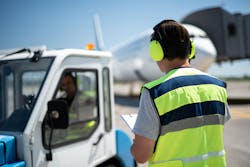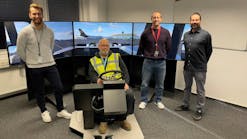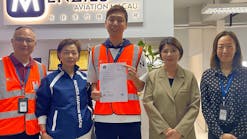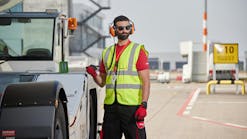Re-skilled and Ready to Re-start
As the aviation industry continues to recover from the COVID-19 pandemic, opportunities may arise for members of the workforce to advance their careers, pursue new roles or add responsibilities to existing job duties.
According to Dimitrios Sanos, IATA’s senior product manager, airport, fuel and ground operations training, changing roles within the industry is an opportunity to cross utilize competencies. For that reason, he says re-skilling training is much more targeted.
“Re-skilling gives a better starting point,” says Sanos, noting there are topics that everyone at the airport should be trained on such as security awareness, occupational health and safety and customer service.
“It is even more obvious when an employee is re-skilled within the same operational areas, such as ramp handling and many courses received for the previous role may be valid and do not need to be provided again,” Sanos adds. “We should keep in mind that during the crisis and recovery phase, there is a need for existing staff to perform additional tasks, so re-skilling can be related to multitasking.”
A good starting point for establishing a re-skilling curriculum is reviewing international standards and recommended practices (SARPs). What’s more, chapter 11 of the IATA Airport Handling Manual provides a breakdown of training requirements and topics according to job function and task.
“We must highlight the importance of having training that is modular and is targeting functions instead of specific job titles and roles,” says Sanos. “In simple terms, it does not matter what your job title is. If you are responsible for performing certain tasks, then you need to complete the respective training courses.”
However, an employee may have completed relevant courses when training for a previous role.
“If still current, this training does not have to be repeated. However, in each of our training courses, we clearly specify the pre-requisites in terms of experience and for some even the date of the latest certificates,” explains Sanos. “Again, the review of a training matrix like the one we see in AHM chapter 11 will probably provide the right answers.”
While there is no formal provision for re-skilling, all courses required for certain job functions need to be provided, and individual airlines or national and international regulators, may require specific training.
“The training record of existing employees can be extremely useful because we can identify training that has been completed. For example, if a person had received airside safety awareness training when working as an aircraft cleaner then this can be cross utilized for aircraft loading tasks,” Sanos notes. “Similarly, we can identify synergies between ticketing and check-in functions. It is even more simple to identify Dangerous Goods training as per regulation.”
Training should be delivered using a blended solution as appropriate for the individual training needs of a specific operational function, audience and/or regulatory requirement, according to Sanos.
“Training should, therefore, be a combination of theoretical and practical skills and assessments designed to develop the trainee’s competence and ability to successfully complete the task, to the required standard,” he says.
Training is but one of the key elements of re-skilling, and Sanos points out there are many topics in ground operations where on-the-job familiarization is required.
“The advantage of re-skilling is that there will be several topics that training is completed before, and that familiarization and basic experience is already there,” he says.
He recommends training be planned based in close cooperation with the airlines about to restart operations at a specific station.
While cargo operations have been steady, passenger traffic is slowly growing. As entry restrictions are lifted, more activity is expected. So, now is the right time to start to begin re-skill training.
“IATA has introduced guidelines for a safe and efficient restart,” says Sanos. “We would strongly recommend reviewing existing support material and future updates at www.iata.org/ground-operations.”






